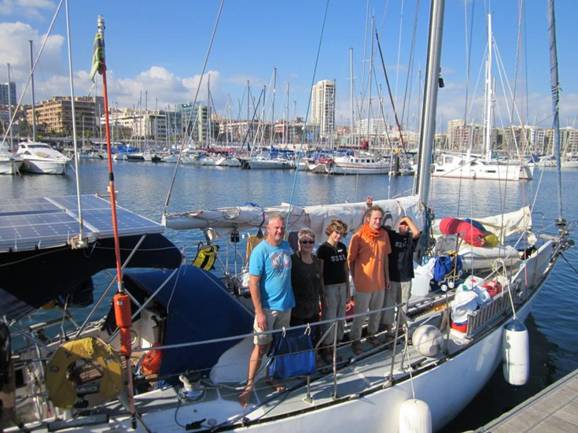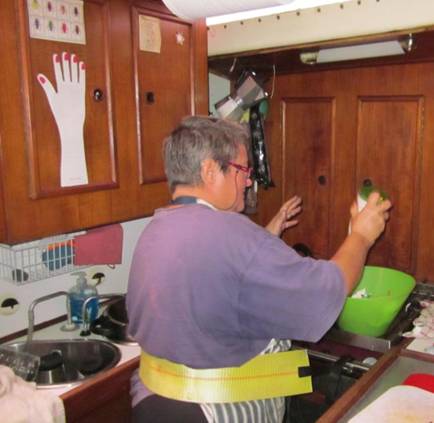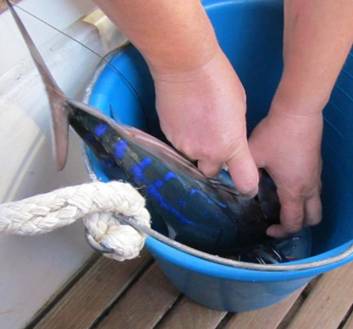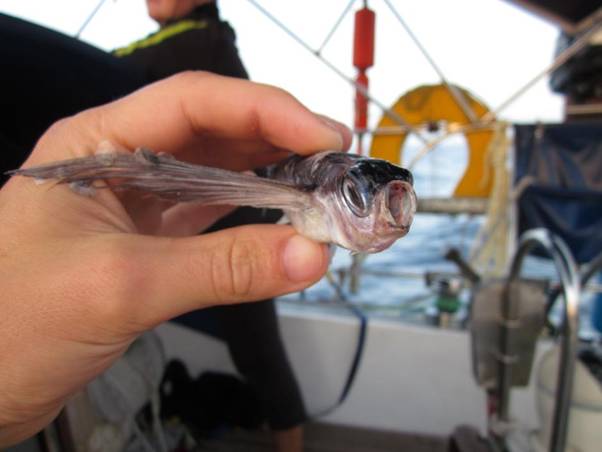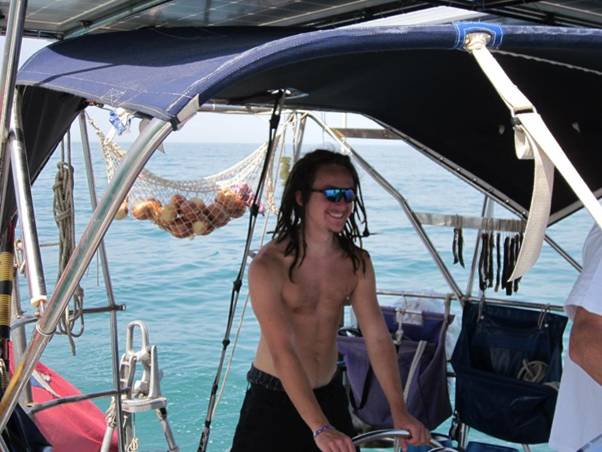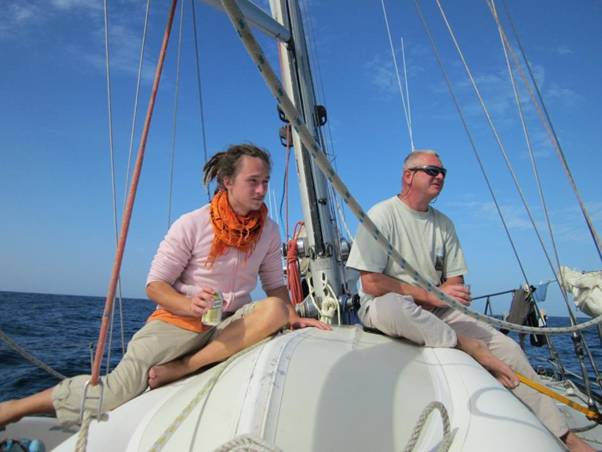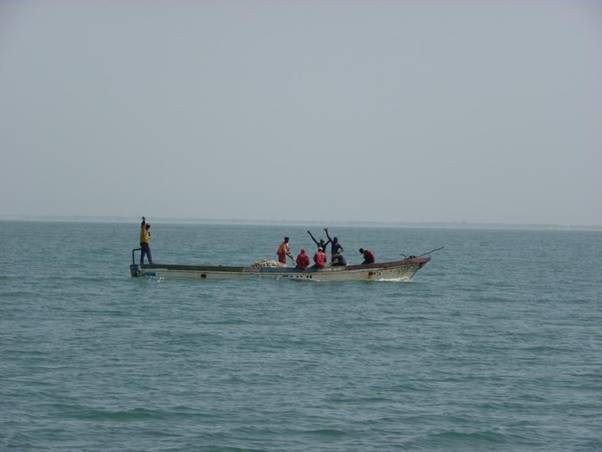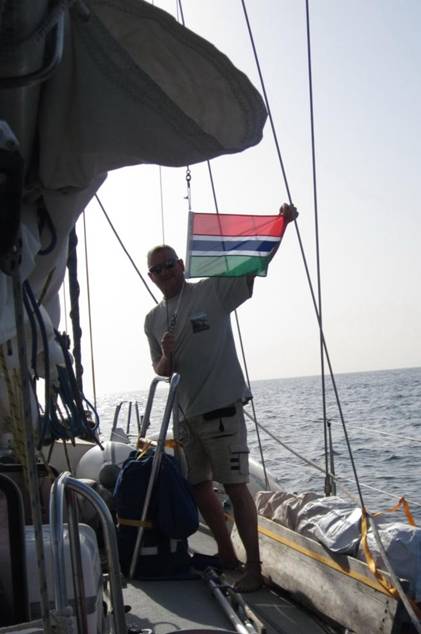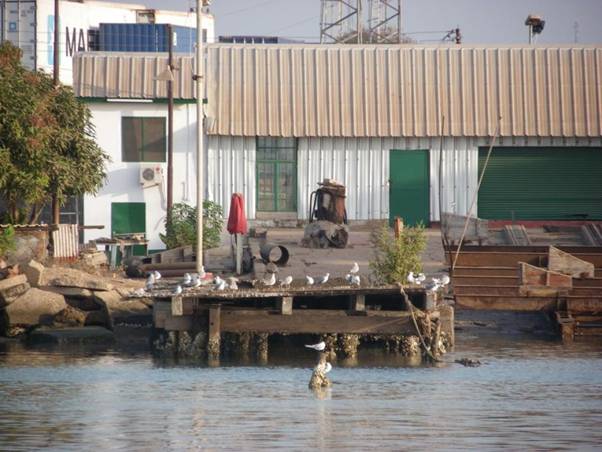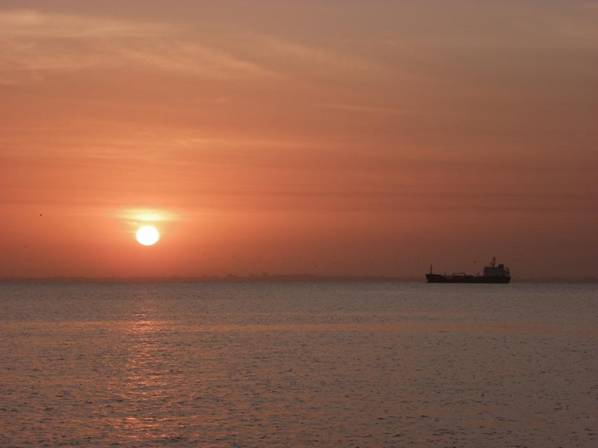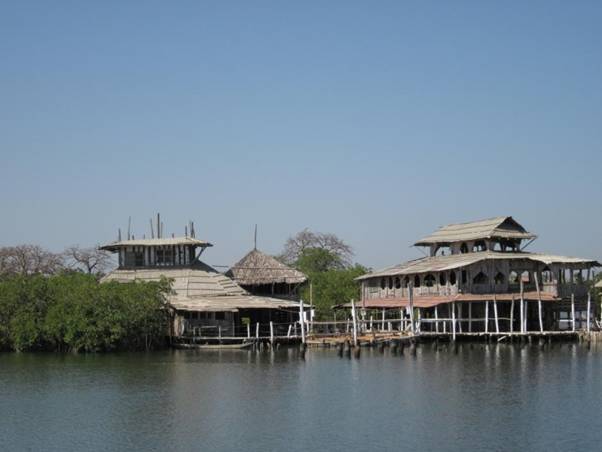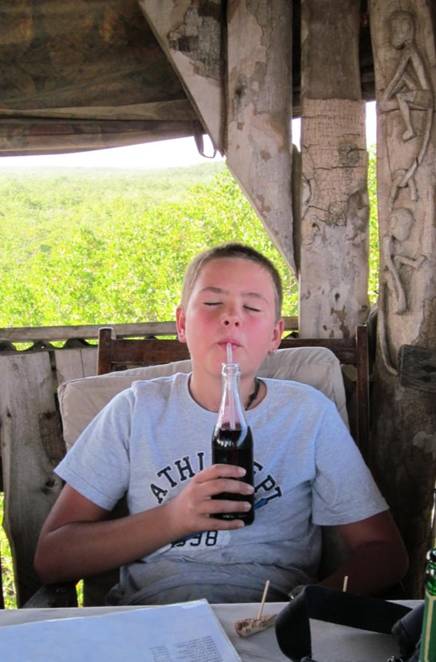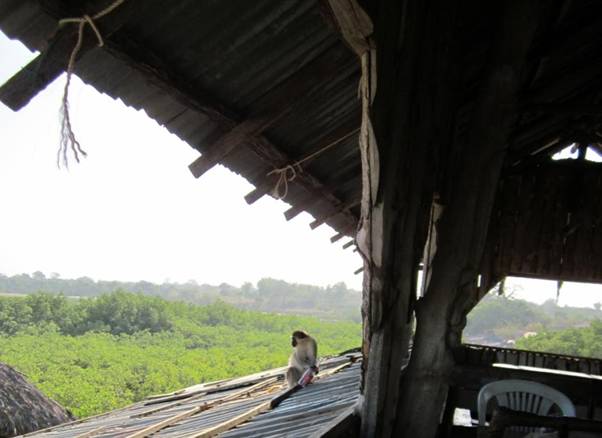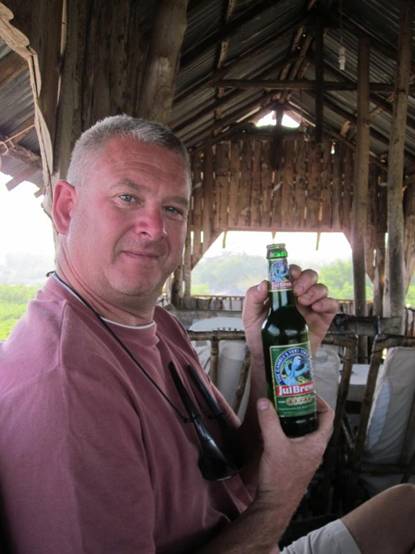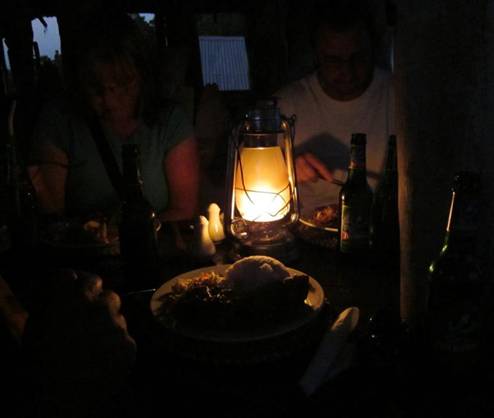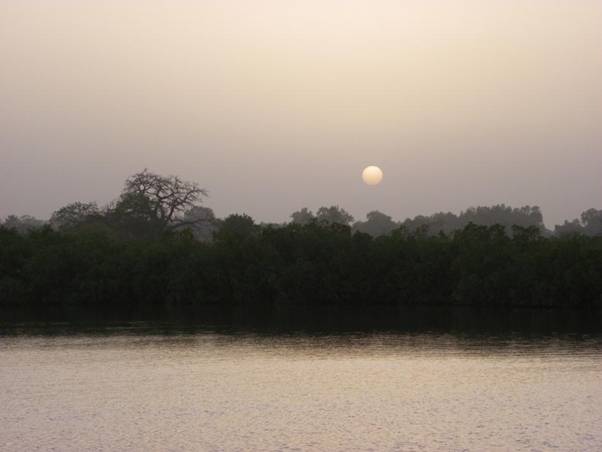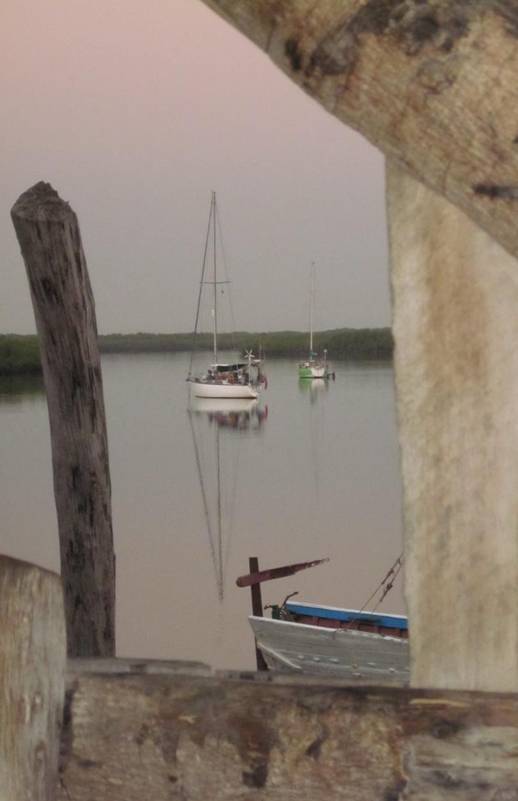Blog update: Passage to Africa

It felt like we were never going to get away from the Canaries – you know the scenario – a whole year to get sorted to leave and we STILL weren't ready! We let HEYMEDE’s ropes go and we waved AQUAMARIJN off, and settled down for a few more days and a couple more boat jobs. We finally ripped ourselves away from Pontoon R on 31st December. We took a ‘beach bum’ (complete with Rasta dreads) – Luca – with us. We got to know him in Las Palmas; he was hoping to get to Brazil, but happy to change to Gambia and make his way across land back to Austria (and college) by March.
Sara and Harry (SARA JANE) took one last photo and waved us away from Las Palmas. On passage The first few days of a long passage are always the worst, not least because B, B and I are usually seasick (we were) – and poor Luca discovered he wasn’t immune either. To make matters worse, we had swell on the port quarter for the first couple of days which meant we corkscrewed over every wave. Luckily, the seasickness eventually subsided and we settled into a luxurious 3 hours on, 6 hours off watch system. While it was overcast and cool for most of the trip, we had good winds for the first 3 days and made a steady 5 or 6 knots. This was our first real trade wind passage, and our introduction to the famous ‘Atlantic roll’; we tried a variety of sail plans (involving lots of shouting, rope, and the spinnaker pole). The motion was sometimes ‘boisterous’ – boisterous enough for me to dig out the big yellow strap and chain myself to the crash bar in front of the oven so that I had both hands free for juggling hot bread etc. We caught a decent sized bonito, and baked fresh bread for lunch most days. Our final time was 9 days 16.5 hours for the 950 nm passage.
The first outing of the yellow galley strap – does that make me a real sailor (or just confirm my status as official galley slave)?
The decent sized Atlantic Bonito (Sarda sarda). It was great to see lots of dolphins again (Luca hadn’t seen dolphins in the wild before) and we were delighted to see whales – ranging from unidentified blow at a distance to a couple of pods of pilot whales surfing the waves with us, and a Bryde’s whale swimming alongside the boat for a few minutes to take a look at us. We saw quite a few flying fish, and two found us (but we didn’t find them until they had desiccated on deck).
An ex-flying fish. While the weather was mainly overcast and cool during the day, the nights were clear and studded with stars; the phosphorescence was fantastic – on one of their watches, Bryn and Luca had phosphorescent dolphins zooming around the boat.
Luca at the wheel (note the onions in their hammock behind him and biltong curing on the right).
A tin of beer to celebrate getting to the half-way point. The wind died off almost completely for the last couple of days, so we motor sailed around Cap Vert and through the pirogue-and-pot-buoy-infested waters between Dakar (Senegal) and Banjul (The Gambia).
Senegalese fishermen waving as we passed.
Hoisting the Gambian flag as we entered Gambian territorial waters. The technical hitch bit Despite the cloudy weather, the new solar panels performed superbly, and (with the DuoGen on tow mode) kept our batteries topped up. We had to clean the solar panels religiously every day to get rid of the thick red dust blowing off the Sahara. It was just as well that we had the alternatives sources of water and solar energy, as the alternator died (alternator number 3 possibly 4 – we are starting to lose count!) so we weren’t able to run the engine and use that to charge the batteries. David did fit our spare alternator (in the middle of the night, to add a little spice) but it wasn’t making much difference (‘investigate cr*p output from alternator’ has now added to the list of ongoing boat jobs). We managed to put a small rip the main sail at one of the reefing points, so the sewing machine will be due an outing in Africa too.
Bryn and David cleaning the solar panels with the nifty squeegee thingy I found in a Chinese shop in Las Palmas duck-taped to the boat hook (note the landing net deployed to catch flying fish).
David down the engine hole fitting the new alternator. Checking in to The Gambia We made our way into the mouth of the Gambia River, to Half Die, the port area of Banjul. The area is known as Half Die because half of the population here died in a cholera epidemic in 1869 (so Steve Jones tells us in the Cruising Guide to West Africa). We anchored up, hoisted the Q flag, and swapped passage stories over a cold beer with Dave and Taryna (HEYMEDE) who had arrived a couple of days earlier. The next morning David got some Gambian currency (45.00 Gambian Dalasis = £1.00) and began the checking in process which took about 4 hours and involved inspections from Immigration and Customs Officers. Once we had checked in, Luca set off couch surfing, and we wandered into the port area, eventually ending up in one of the hotel restaurants near the coast for roast lamb (surreal!).
Gulls, terns and pelicans have taken over the deserted shipyard at Half Die.
Sunrise over the anchorage at Half Die, Banjul. Up the creek From Half Die we headed up river to the anchorage at Lamin Lodge.
Lamin Lodge.
The anchorage from Lamin Lodge.
CAPE at anchor.
Heaven is an ice-cold Vimto.
Bethany on her second Vimto, as a cheeky monkey nicked the first one!
The cheeky monkey, complete with empty Vimto bottle.
Sampling the local beer – JulBrew.
Dining at Lamin Lodge is by candlelight as there is no electricity. When we first arrived in the Gambia, the weather was a dry and dusty 38°C with a warm breeze, but a cool and comfortable 20°C at night. We have also had a couple of days of a steady 20-knot wind that has coated everything in a thick red dust. It is safe to swim here in the brackish, tidal part of the river, as the crocodiles don’t start until the water runs fresh. So far it feels a bit like a cross between Morocco and India, but they speak English and it is more relaxed towards women and dress. Although it is dusty, very basic and chaotic, we haven’t seen any malnutrition – people here (and animals too) at least seem to have enough to eat. Banjula Belly We have all been laid low with tummy trouble – Banjula Belly – as is known locally (mainly dehydration we think) but are getting over that now. We have met up with the charity that we raised money for in Las Palmas (FirstAid4Gambia), but more of that in the next blog or I’ll never get this posted!
Sunset over the mangroves.
CAPE anchored in the Gambia River. You can get in touch with us via sarahsmith dot phd at gmail dot com. © 2012. All materials (text and photographs) in this blog (unless stated otherwise) are the property of Sarah and David Smith. Copyright and other intellectual property laws protect these materials. Reproduction or retransmission of the materials, in whole or in part, in any manner, without the prior written consent of the copyright holder, is a violation of copyright law. |
